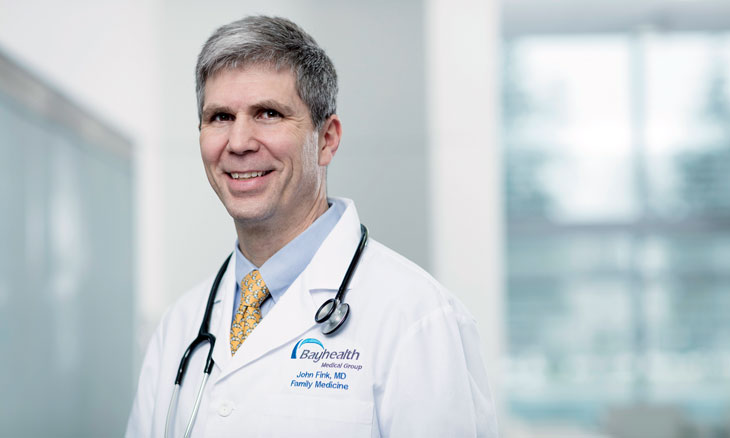
COVID-19 Vaccine Two Years Later; Healthcare Crisis Remains Top Priority
It’s hard to believe it’s been two years since the first COVID-19 vaccine was administered. It was just before dawn on December 15, 2020 that Bayhealth Registered Nurse Elizabeth (Liz) Cote stepped forward to be the first person in the state of Delaware to receive the long awaited COVID-19 vaccine. For Liz it was an act of love. As a nurse on one of our COVID-19 care units, Liz had purposefully avoided seeing her elderly grandfather for almost a year for fear she could be carrying the deadly illness and might inadvertently transmit it to him. That day she proclaimed, “I just want to be able to be with him and to give him a big hug again…”
Within months tens of thousands of people stepped forward to be vaccinated for their own personal reasons. Two years later, there have been over two million COVID-19 vaccines administered in Delaware and 95% of Delaware adults have had at least one dose. Despite this tremendous accomplishment, there are about 150 new cases of COVID-19 in Delaware every day, a number that it is likely underestimated given the widespread use of home testing. What’s more, we are in the heart of respiratory virus season with more than 600 cases of the flu (influenza) and a high of 400 cases of RSV (Respiratory Syncytial Virus) in recent weeks.
These respiratory infections are stretching our state’s healthcare resources thin. Emergency department (ED) wait times across the state of Delaware reach hours instead of minutes. Hospital bed capacity is as tight as it was at the height of Omicron surge this past January. About 150 patients in Delaware are currently hospitalized with COVID-19, and dozens more are hospitalized with influenza and RSV. In addition to this “tripledemic” of respiratory infections, hospitals continue to deal with other lasting impacts of the pandemic.
It's important to understand that hospitals remain widely understaffed across the United States. More than 20% of our employees left the industry or switched positions due to fatigue or burnout. That gap equates to thousands of healthcare workers just in the state of Delaware alone. Multiple respiratory viruses are cutting a wide swath across our communities while healthcare staffing shortages are once again preventing EDs and hospitals from meeting community needs consistent with our own standards.
To ensure the best care for all, we must come together once again. As healthcare providers, we must continue to explore new ways of working that are more efficient while encouraging the next generation to step forward. As patients and family members of patients, we all must heed the warnings to protect ourselves by getting vaccinated for COVID-19 and influenza, and by continuing to wear masks, socially distance and practice good hand hygiene. Those measures will not only help prevent the spread of COVID-19 but also influenza, RSV and many other respiratory viruses for which we do not have vaccines.
Additionally, as patients we must be better informed about how and when to use healthcare resources like the emergency department. EDs are designed to care for the sickest of the sick and those who are seriously injured. They don’t operate on a first come, first served basis, which can be a frustration for patients who find themselves waiting a long time to be seen. If a patient presents with flu-like symptoms that are not life-threatening, they will always be seen after patients who have life-threatening injuries or ailments. It isn’t a choice of healthcare clinicians of who they treat first- it’s a moral, legal and ethical obligation to treat those with life-threatening conditions first, regardless of how long other patients have been waiting.
As a physician who has witnessed and who has been personally touched by the lasting impact of the pandemic, I plead with everyone to do their part. Protect yourselves and your family and learn when to use the emergency department and when to use your primary care doctor, nearby walk-in clinic or a virtual telehealth option like Bayhealth@Home. Equally as important, please remember to practice kindness and understanding when engaging with one another. As clinicians we must remember that patients are tired and frustrated with long wait times, and as patients we must remember healthcare clinicians are just as tired and frustrated with the same dynamics. My friends and neighbors, after over two years the core message remains the same- we are all in this together.
